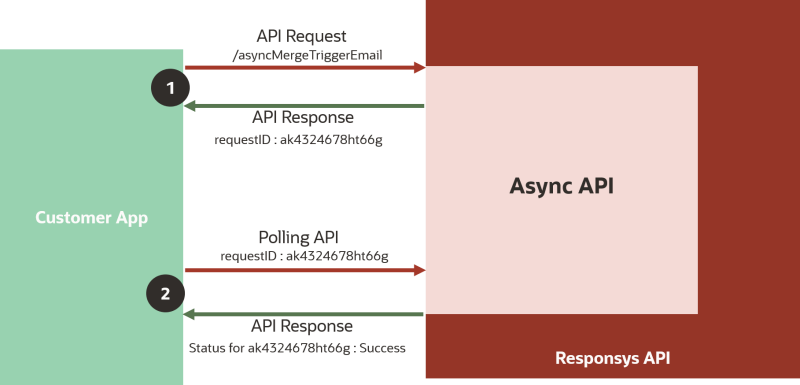Asynchronous API resources
Note: The Asynchronous API is generally available for all Responsys customers.
The standard Oracle Responsys Web Services API processes API requests synchronously. For most tasks, Responsys sends a response shortly after the system finishes processing the call. This isn’t always possible with database operations, where times to complete database operations are unpredictable. Delayed responses can lead to timeout issues when they run longer than your client application’s timeout settings.
With the new Oracle Responsys Asynchronous REST API, we are introducing asynchronous processing for the Merge Trigger Email and Merge Trigger SMS tasks. Immediately after receiving an asynchronous API request, Responsys validates the payload and if the payload is well-formed JSON, the system returns an “ACCEPTED” status along with a transaction ID. You can poll later with a different API request to check the status of the original request corresponding to the transaction ID.
Learn more about Responsys APIs in this video and download the Responsys API Brochure.
Workflow
Leveraging the asynchronous APIs typically resembles this workflow:
-
A client sends a request to a Responsys asynchronous API endpoint. The asynchronous API endpoint responds with a request ID.
-
A client sends the request ID to the Polling API endpoint to find out the status of the request. The Polling API responds with the status of the asynchronous request.
Here's a diagram illustrating how the polling API works:
Optionally you can include reference data in the request to the asynchronous endpoint. The Polling API can then return the reference data specified in the asynchronous request. See Returning reference data for asynchronous requests for more information.
